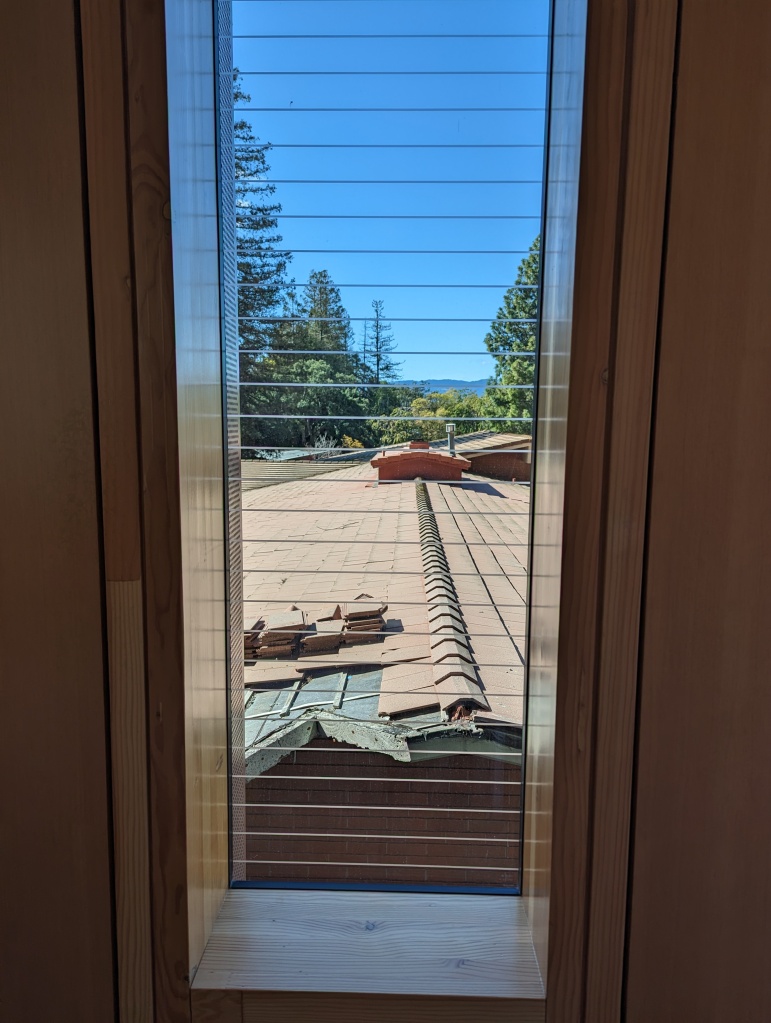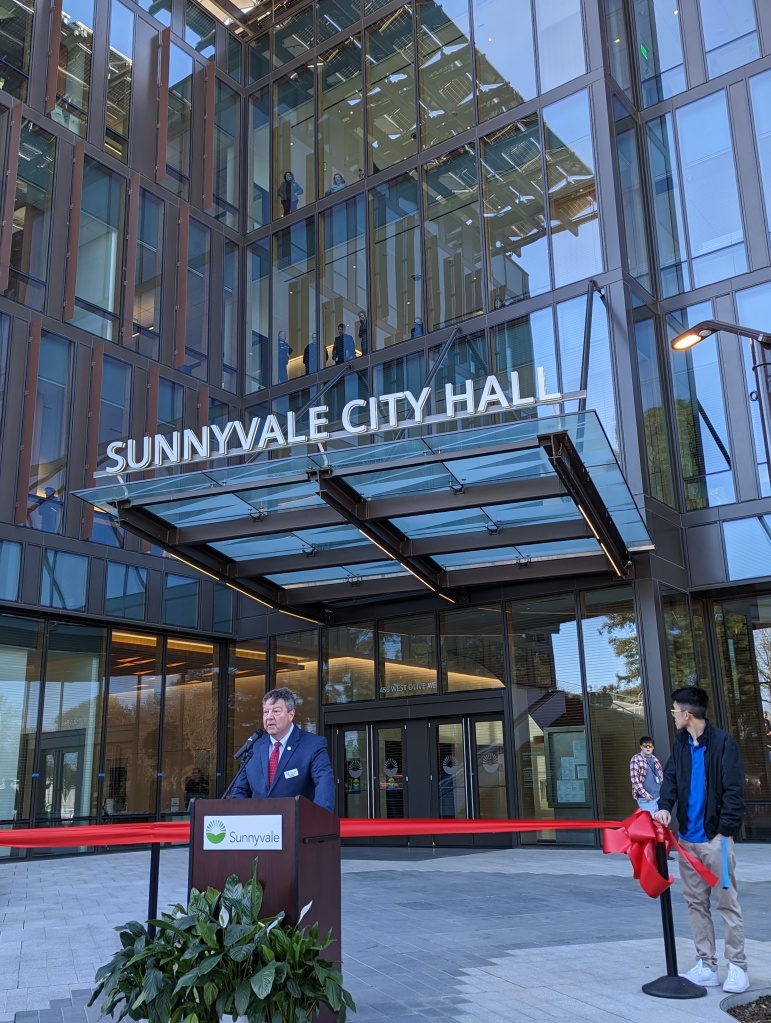Monday, April 3, 2023, was a cold and windy morning in the city of Sunnyvale, where city staff, local political leaders, and the press assembled in the shadow of Sunnyvale’s new City Hall to cut the ribbon on what is likely the nation’s first building to be both be certified LEED Platinum and achieve Net Zero Emissions.
“This moment has been 8 years in the making, beginning in 2015. Listening to our community is what got us here today,” explained City Manager Kent Steffens. Mayor Larry Klein explained that construction broke ground in December 2020, taking just over two years, amid the Pandemic. “It’s like an elegant modern museum, with wood elements reclaimed from Redwood trees that were on-site.”
The new City Hall stands at four stories, with 120,000 square feet of office space, next to the adjacent, single-level old City Hall. City services are moving into the new building, which still has some late construction kinks to work out. The new Council Chambers, with seating for 200 residents–twice the capacity of the old City Hall, remains unfinished due to some supply chain issues, but core city services, like the Construction Permit Center, are open for business. A public Grand Opening is scheduled to be held on September 23, which will mark the culmination of the first phase of Sunnyvale’s Civic Center Modernization project. Subsequent development of the Civic Center will involve the construction of a new two-story library and two-story Public Safety headquarters directly across the street from City Hall, along with new parkland and an amphitheater.
Costing $245 million, the new City Hall Building is light and airy and features wooden accents and several pieces of hardwood furniture. The lobby of the building stretches the height of its four floors, centered around a wood-clad floating staircase and accessible by elevators. Each floor features distinct artwork and seating adjacent large windows which afford an ever-greater view across the city. The Libby’s Water Tower is visible from the fourth floor of the lobby.
The building is designed to achieve a LEED Platinum certification, and the city will track energy to confirm Net Zero energy objectives, mainly through the rooftop installation of nearly 1,700 solar panels, which should provide 1.1 gigawatt-hours per year. Enough energy to power 100 homes, but not quite enough to power a Flux Capacitor. This is just as well, as the street in front of the new City Hall is designed as a pedestrian plaza, and it would be difficult and dangerous to pilot a DeLorean at sufficient speed to effect a time jump.
The green building features half a dozen posts for bicycle parking, which were nearly all occupied, near the main entrance. 87 spaces are available for private vehicles underground, including 11 EV charging stalls.










